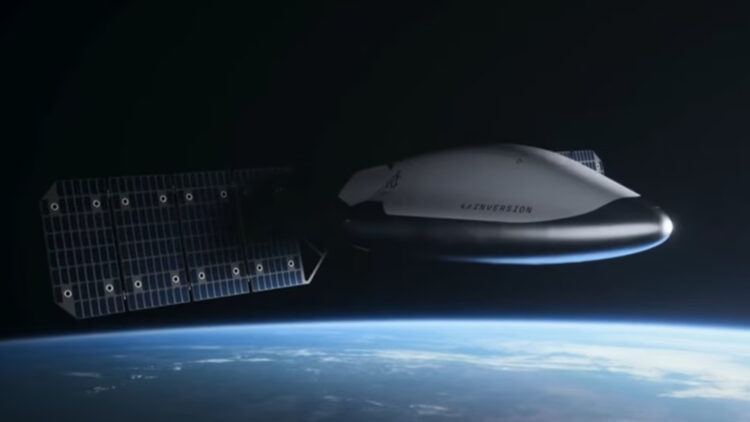A Los Angeles-based small aerospace startup called Inversion is now developing “Arc,” a spacecraft that will transport cargo anywhere on Earth—in about an hour. The concept stands between rapid space development, robotics and machine learning, and the AI boom.
This orbital transport is a small and well-organized spacecraft designed to be quiet in orbit until it is given an order. When needed, it would descend back through the atmosphere, move in the direction of its target, and land on solid ground, water, or snow using a parachute.
Inversion has already made significant progress: it built Ray, an early prototype, and is currently organizing the next round of testing. According to the company, this could mark the beginning of a new “space era” in logistics, where orbital transport is used to transport vital goods around the world.
Arc Spacecraft: how it is supposed to work
Arc is meant to be a relatively small spacecraft that’s about 8 feet tall and 4 feet wide. It will stay in Earth’s orbit as a sort of delivery capsule on standby instead of launching and landing like a typical plane or rocket. Arc would be guided back down and land safely using a parachute when a mission is activated. Because of its design, it can land on soil, snow, rivers, or the ocean without affecting its cargo.
Arc’s main goal is speed, especially in circumstances where time is of the essence. The idea came from the necessity of managing high-stakes, urgent deliveries. Some supplies just cannot wait for slow shipping routes or blocked roads—in a world where there’s war, conflict, and humanitarian crises. The concept is that Arc could deliver goods that traditional systems find difficult to move quickly and reach nearly any location on Earth in less than an hour.
According to Inversion, this spacecraft is the beginning of a new logistics model centered on orbital infrastructure, not just another quick transportation option. The idea is to create a worldwide network of tiny spacecraft that can travel quickly around the planet and descend into the atmosphere when it’s necessary. If it succeeds, it might complement the systems that we have already, working as another type of transportation when ships, trucks, and airplanes cannot manage to arrive on time.
From Ray prototype to real orbital missions
With 25 employees and a strong background in space engineering, Inversion is still a very small business. The company formally launched in October 2025 after the team started working on the concept in the early 2020s: Building a spacecraft prototype known as Ray.
The same small team created Ray, which was built for about $1 million as a trial to understand if these type of model could work. This is a low number for a space project, and Inversion sees it as evidence that a new orbital transport system with advanced technology can be developed for less money than a conventional aerospace program.
Plans to test Arc in 2026 have already been initiated by Inversion. These will be essential to demonstrate whether Arc (and similar vehicles in the future) will survive the entire mission profile, including launching, remaining in orbit, reentering the atmosphere, and making a precise landing while carrying cargo.
Challenges, doubts, and what the future holds
There’s still a few things to go through: flight tests, regulatory authorizations, and frequent inspections. Potential clients are going to consider price, dependability, and safety, to determine if they give a try to Arc or stay with more traditional options.
However, people are excited already, and trials will determine if 2026 will be the year a new orbital transport will join the industry of cargo.
